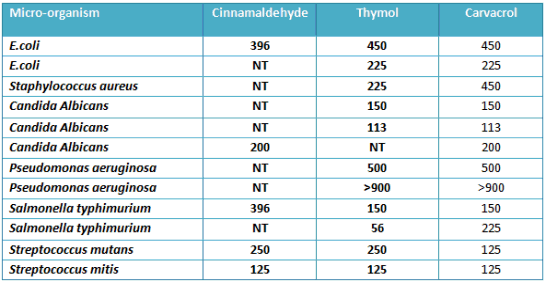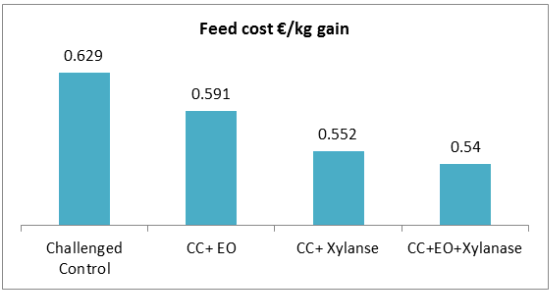



Reducing Salmonella in Poultry with Feed Additives
UK - Reduction in Salmonella contamination of poultry throughout the food chain continues to be a major focus of food safety programmes, says Armin Vikari of Danisco Animal Nutrition. Feed additives such as enzymes, probiotics and essential oil compounds can be used as part of an effective biosecurity programme to reduce the risk of Salmonella infections, support good flock health and contribute to food safety.Salmonella infection is a costly occurrence for poultry producers and implementation of multi-factorial, incremental measures to control disease will reduce the risk of Salmonella contamination. Feed additives can help in a variety of ways. Essential oil compounds’ antibacterial properties reduce the likelihood of feed contamination, support good flock health and contribute to consumer food safety. Enzymes and probiotics maintain a healthy digestive system and intestinal environment for improved nutrient utilisation and minimised pathogenic bacterial proliferation.
In addition to these benefits, other practical benefits include the fact that poultry fed essential oil products, probiotics and enzymes can go straight to slaughter and do not require a medication withdrawal period, saving time and money for the producer and reducing complication at the feed mill.
In-feed measures combined with routine bio-security measures on farm will help reduce the chances of contamination of resulting food products at the processing plant. Healthy nutrition solutions involving probiotics, enzymes and essential oil compounds for poultry production systems can promote safer feed and healthier animals, leading to better profits for the producers and safer food for the consumer.

Introduction
Salmonella is one of the top five bacterial pathogens that cause food borne illness and despite the use of antibiotics Salmonella is continuing to be a major challenge worldwide.
Although antibiotics are an effective way of preventing Salmonella contamination, the use of antibiotics routinely in animal production is controversial and not thought to be a sustainable method of ensuring food safety for the consumer. A reason for this is the impact that prolonged use of antibiotics at sub-therapeutic levels is thought to have on encouraging bacterial resistance. Coupled with this, is the consumers' negative perception of medication in the food chain and their demand for antibiotic free ‘healthy’ nutrition.
Feed Additives: Role in Controlling Salmonella
Salmonella are carried within the gut of the birds and contaminate the environment by shedding from infected birds through their faeces, feather dust, and eye/nare secretions. It may also be spread by cross-contamination of carcasses in the rinse or chill cycles, or on equipment surfaces during the post slaughtering process.
Feed additives that create a hostile environment for pathogen growth, while ensuring the cultivation of beneficial microbial populations and healthy flocks, will reduce the risk of Salmonella infection and contamination, through the production chain, without resorting to antimicrobials. Feed additives assist in reducing Salmonella risk in a variety of ways.
Probiotics (direct fed microbials) are known to modulate the intestinal microflora to improve intestinal health and nutrient utilisation. Essential oil compounds have been shown to have inherent antibacterial activity and support a healthy immune function. The mode of action of both of these feed additives subsequently improves pathogen resistance of the poultry.
Enzymes play an important role in ensuring the gut is less easily populated by pathogenic bacteria by improving intestinal digesta consistency. The resulting improvement in feed digestion from using enzymes and the improved nutrient movement through the gut results in a reduced likelihood of feed stagnating in the intestinal tract. This in turns reduces the potential for internal pathogenic bacterial growth.
However, there are no hard and fast rules about each feed additive's mode of action within the animal and a multi-modal approach makes it less likely that bacterial contaminants such as Salmonella can adjust to counteract each of these.
Direct Fed Microbials
The development of the gut microbiota balance in the first few days post-hatch is vital to ongoing efficient nutrient utilization and resistance to enteric disease caused by pathogenic bacteria invading the gut. Probiotic Bacillus subtilis strains can benefit intestinal morphology, suggesting increased capacity for nutrient absorption by the bird. In addition, in-feed probiotics can also contribute to improved litter microbiota composition of poultry houses and better litter quality. Positive effects on litter quality encourage a cleaner flock environment, lower ammonia levels, decrease the occurrence of carcass blemishes and help to reduce the risk of contamination of the end product.
Essential oil compounds
Numerous plant or essential oil compounds have shown effective antimicrobial, anticoccidial, fungicidal, or antioxidant properties. In-vitro studies have also demonstrated several plant compounds to have a strong inhibitive effect on pathogenic bacteria. Within the range of essential oil compounds used, thymol, cinnamaldehyde and carvacrol have been shown to have strong antibacterial and antioxidative properties (Table 1).

(Source: Lee et al., 2004)
In-vitro studies have shown that the following plant extracts – cinnamaldehyde, thymol and carvacrol – have a broad spectrum activity against pathogenic gram negative bacteria E. coli and Salmonella and the gram–positive Clostridium bacteria. These observations have been supported by a recent review of in-vivo data by Mitsch et al. (2004), Applegate et al. (2009) and Tiihonen et al. (2010).
Efficacy of enzymes and essential oil compounds
Enzymes have traditionally been used to improve nutrient digestion and reduce digesta viscosity. This improvement in digestion reduces the likelihood of the proliferation of pathogenic bacteria in the gut of poultry, with consequent benefits to gut health. Several authors found beneficial gut health effects from using non-starch polysaccharide (NSP) enzymes in the diet.
A recent study at Southern Poultry Research USA used a combination of two essential oil (EO) compounds, cinnamaldehyde and thymol, on top of xylanase. The results indicated that xylanase enzyme and essential oil compound supplementation significantly improved 42–day bodyweight gain and feed efficiency. Researchers also found that the effect of the combination of feed additives was greater than using each additive individually.
In addition to the performance benefits, the xylanase enzyme and essential oil compound supplementation, when used individually, significantly reduced the incidence of Salmonella infection in the intestine between birds by around 61 per cent. Combining both products resulted in a 77 per cent reduction in incidences of Salmonella infection, compared to the control groups.
Economic advantages were also recorded, with the lowest feed costs per kg of gain, compared to the control diet, being realised in the diets containing the combination of xylanase and essential oil feed additives (figure 1).

The data also suggested that dietary addition of a selected combination of essential oil compounds and enzymes can contribute positively to food safety by reducing horizontal transmission of Salmonella in poultry production systems.









